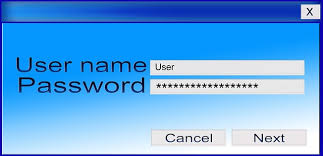 In our last article we recommended a publication from the GCHQ on passwords, and today we continue that discussion. Many of the recommendations are suggestions we have covered before in previous posts, but the importance of having secure password procedures can not be overstated.
In our last article we recommended a publication from the GCHQ on passwords, and today we continue that discussion. Many of the recommendations are suggestions we have covered before in previous posts, but the importance of having secure password procedures can not be overstated.
Change all default passwords
All of our network connected devices come “ready to go” right out of the box in most cases. For plug and play to work, the devices need to be preconfigured with an administrative user ID (usually “admin”) and a password (in many cases, “password”). This includes most wireless access points, and things like baby monitors, and smart appliances. Lists of devices and default crednetials can be easily located on the web. Just type in “default password list” and see what you get. So when you set up your device, take the extra step to change the defaults, otherwise you may have some stranger take over your baby monitor. Yeah, that really happens.
Good password policy for humans
Using a password manager such as LastPass or KeePass is one of the recommendations, and since I have started using LastPass, I have to concur. Just understand that if your master password is compromised, the whole collection is compromised.
Regular changing of passwords actually tends to reduce security rather than improve it, as users go to easier to remember models. If this is a rule in your organization, you may just want to abandon it. You will be thanked by a grateful user group. And only use passwords where you really need them, or consider using a single sign-on solution to reduce password fatigue.
On the other hand, sharing passwords among more than one user just negates the value of using a password in the first place.
Since people will tend to use simpler password strategies to help make their passwords easier to remember, it is important to use password monitoring solutions and password lockout procedures to protect against guessing and brute-force attacks by unauthorized persons or password-cracking machines.
Another recommendation is the use of password strength measuring services such as OWASP’s Passfault Analyzer. On the other hand, use of random password generation software is discouraged due to the difficulty that people have remembering these random strings, and the fact that these passwords get written down and stored insecurely.
In our next article we will wrap up our series on password strategy.
More information:
Password Guidance: Simplifying Your Approach.
ShareSEP




About the Author:
I am a cybersecurity and IT instructor, cybersecurity analyst, pen-tester, trainer, and speaker. I am an owner of the WyzCo Group Inc. In addition to consulting on security products and services, I also conduct security audits, compliance audits, vulnerability assessments and penetration tests. I also teach Cybersecurity Awareness Training classes. I work as an information technology and cybersecurity instructor for several training and certification organizations. I have worked in corporate, military, government, and workforce development training environments I am a frequent speaker at professional conferences such as the Minnesota Bloggers Conference, Secure360 Security Conference in 2016, 2017, 2018, 2019, the (ISC)2 World Congress 2016, and the ISSA International Conference 2017, and many local community organizations, including Chambers of Commerce, SCORE, and several school districts. I have been blogging on cybersecurity since 2006 at http://wyzguyscybersecurity.com